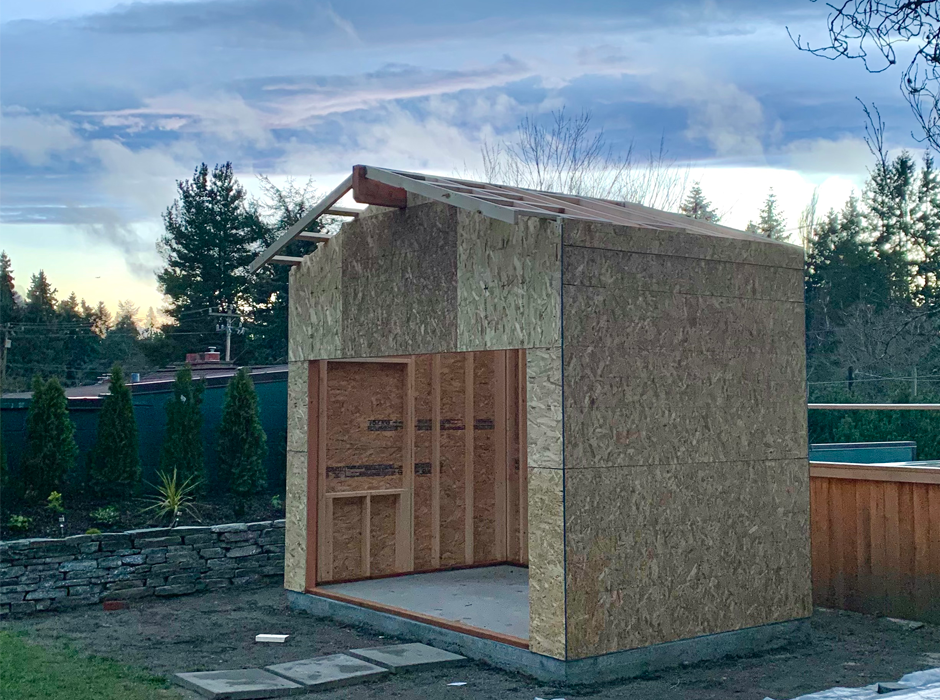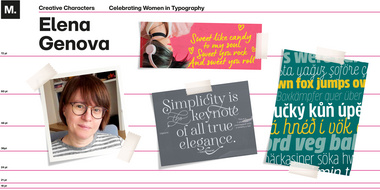Celebrating Women in Typography: Kimmy Kirkwood

March is Women’s History Month, so we’re taking the opportunity to celebrate some amazing women working in the type design industry.
This week, we’re talking with Kimmy Kirkwood, a type designer based in Seattle, Washington, about her journey and insights as a type designer.
MyFonts: Tell us about your journey as a type designer and any challenges you had to overcome?
Kimmy Kirkwood: I got my start in the type design industry in 2010 after I graduated from undergrad. I started working in the film industry for a print vendor designing movie posters.
In college I had taken an advanced typography class where one of the projects was to create a silly typeface. I loved it, which led me to take an individual study class to make a full usable typeface. It ended up being my favorite class.
While working in the entertainment industry, I worked a lot with display typography and integrated type with imagery. This led to making custom logos for movies, and in my free time I would go home and make the whole alphabet.
I reached out to MyFonts in 2011 to see if I could sell type and I was lucky to be accepted. By 2013 I was able to leave my job and do type full time.
This is when I learned about the university of Reading and their master’s program. But it wasn’t a possibility at that time, so I read many books and became self-taught until I was able to go to the University of Reading.
At the university, I was introduced to the history of type and how male dominated it has been. It wasn’t really until the start of desktop computing that women were able to be a part of the industry. We were lucky to have pioneers like Carol Twombly and Zuzana Licko.
While the program was great, I am glad I got my start independently as it would have been a lot more intimidating.
MF: What would be one tip that you will give women who are considering becoming a type designer?
KK: Just to go for it, if it’s something that you really want to do. Work on your designs and reach out to established type designers or foundries to get notes on them, but don’t feel like you have to submit a new font through a Foundry in order to get started.
The latter is probably a little bit less intimidating, because then you don’t have to worry about marketing and how to actually get sales.
But I know a lot of really talented people who have figured it out on their own, so it’s definitely there for you if you want it. And don’t feel intimidated by the type industry, you can make your own way in it.
MF: You said that you used a lot of books on your own when you were learning. Is there one favorite book that you have?
KK: I like seeing old types that we don’t really have access to in the States as much as Europeans do, because they’ve been doing this for so much longer. A lot of them are online too, but I find that books give you insight into the detailed aspects of type design. I also bought a lot of books on lettering. A lot of my early typefaces were based on lettering as I was trying to emulate what a natural organic hand can do.
Some of the books in Kimmy’s library
- Letter Foundation
- The Anatomy of Type
- The Geometry of Type
- Lots of books on lettering
- Historical books
MF: Can you share some insights on what more can be done to advance diversity in typography?
KK: I know that this is kind of a tricky one because I am all for the idea that anyone can give it a try. But you also need to have some sort of quality control, because you don’t want to sell fonts to customers that don’t work or don’t have a full character set. I think finding a balance between having a low barrier of entry where anyone feels like they can have a shop, and programs or advisers who can help guide new type designers to create quality typefaces is important. Having this low barrier of entry is somewhat important in allowing more minority and female type designers to feel welcome and that they can do this.
MF: When did you start your type design career?
KK: My font, Lunchbox, launched my career. I went from making $50 a month to $2,000 a month, it happened so fast that I didn’t think it was going to continue going this way. I don’t know if I just got lucky. My style at the time was very organic and kind of sweet. Lunchbox gave me the momentum to keep going, and I felt that I could actually do this. As a hobby, it would’ve taken a lot of perseverance to continue on a very slow trajectory.
It took one font, one really successful font to be like, wow, I can do this.
MF: Shifting gears — What do you do besides type? Share a fun fact about you.
Ever since I was a kid, I’ve always loved making things. Designing type has given me the perfect outlet professionally, but I also love to make things outside of my computer. Much to my husband’s dismay, my ‘famous last words’ are, “wouldn’t it be cool if”. We bought a small house in Seattle last year and decided to gut and renovate the entire thing. We had a contracting team help us do all of the more professional work, but I played GC/designer and put together all the cabinets while my husband did all the demo. We relanscaped our entire backyard and are currently building the studio for my office ourselves.

Kimmy Kirkwood’s Studio in the making.
MF: What would you want to leave us with — any parting words for our audience, our customers?
KK: To our customers, I would like to say like: Thank you so much for making my career something that I can do. I feel like I’m the luckiest person to be able to do what I’m super passionate about for a living. It doesn’t even feel like work most of the time because I really love doing it. So it’s been an amazing career for me to have. And I’m so appreciative of the customers that buy fonts of the marketplaces that make it possible for us to do this. It’s been really great.
Interview edited for length and clarity.


